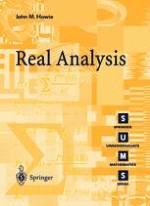
2001 | OriginalPaper | Chapter
Introductory Ideas
Author : John M. Howie, CBE, MA, D.Phil, DSc, Hon D.Univ, FRSE
Published in: Real Analysis
Publisher: Springer London
Included in: Professional Book Archive
Activate our intelligent search to find suitable subject content or patents.
Select sections of text to find matching patents with Artificial Intelligence. powered by
Select sections of text to find additional relevant content using AI-assisted search. powered by
In writing this book my assumption has been that you have encountered the fundamental ideas of analysis (function, limit, continuity, differentiation, integration) in a standard course on calculus. For many purposes there is no harm at all in an informal approach, in which a continuous function is one whose graph has no jumps and a differentiable function is one whose graph has no sharp corners, and in which it is “obvious’ that (say) the sum of two or more continuous functions is continuous. On the other hand, it is not obvious from the graph that the function f defined by $$ f(x) = \left\{ {\begin{array}{*{20}c} {x sin(1/x)} & {if x \ne 0} \\ 0 & {if x \ne 0} \\ \end{array} } \right. $$ is continuous but not differentiable at x=0, since the function takes the value 0 infinitely often in any interval containing 0, and so it is not really possible to draw the graph properly.